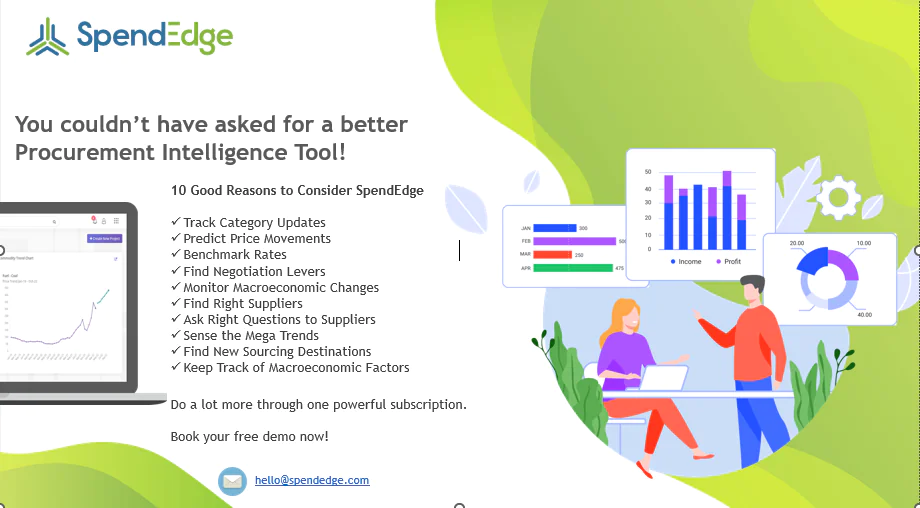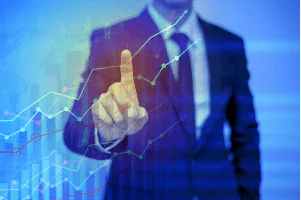By: George Mathew
Understanding is key to managing supply chain disruptions
Any delay in or obstruction to the “normal flow” of raw materials, finished goods or services within a supply chain is termed a supply disruption. Disruptions could result from factors within an organization (internal factors) or outside of it (external factors). Overreliance on a single vendor for critical inputs brings advantages like better pricing and favorable terms, but it also creates the perfect storm of circumstances for supply failures. Some of the other internal determinants of supply chain performance include the cost of the loan an organization has availed to finance goods and materials and employee performance, apart from the overall state of the economy. Inefficient approaches to tracking the flow of goods result in undesirable scenarios like overstocking or stockouts, both of which could create bottlenecks in the flow of goods.
Factors that lie outside an organization’s sphere of influence could also impact the supply chain dynamic. These include natural disasters, political instability, military conflicts, human errors, and gnarled transportation networks. Cyberattacks on more vulnerable links in the supply chain, such as vendors and third parties (the so-called supply chain attack), is a growing threat. Unauthorized access by cybercriminals to various network assets might incapacitate supply networks for days together! These and other supply-side emergencies happen all the while, but a lot of businesses are now well-versed in the fine science of managing supply chain disruptions. C-suiters at these enterprises know what they should do to avoid these events from getting the better of them.
Challenges of implementing the service
Double down on supplier diversification
Engaging with multiple suppliers, all of whom have demonstrated capabilities in delivering the same, similar, or equivalent goods or services, is certainly going to reduce any overreliance on a single supplier, especially for critical deliveries. Moreover, the ensuing competition between vendors around cost and product quality should work to the business’s advantage. Depending on the ground situation, enterprises that have taken the trouble to diversify their vendor base now have the luxury to toggle from a crisis-hit supplier to a healthier and more compliance-friendly one. This way they succeed in managing supply chain disruptions and keeping supplies flowing to meet customer demand even when tension hits the fan! With backup suppliers in multiple locations, businesses will be in a more ideal position to adapt to various market shifts, technological developments, and regulatory changes.
Live-track supply chains with IoT
Tiny electronic devices, such as RFID tags applied to pallets, containers, and carriers, enable real-time tracking and monitoring of inventory (i.e., goods and materials) and assets (e.g., goods carriers) as they journey through the supply chain. Apart from locational data, RFIDs with sensor capacities monitor the physical conditions of the inventory in transit and alert consigners about potential risks to product quality. This is particularly significant in the food and pharmaceuticals sector. With improved visibility of their supply chain, afforded by RFIDs, sensors, cameras, and so on, businesses can track and manage both inventory and inventory-hauling assets to reduce stockouts and overstocking while paring out operational costs. Managing supply chain disruptions has never been simpler!
Move to AI-powered demand forecasting for improved accuracy
Finally, accurately forecasting customer demand for a product or service is the crux of procurement success and crucial to managing supply chain disruptions. Contemporary demand planning solutions, predicated on AI, ML, and forecasting algorithms, can make more accurate predictions after sifting historical sales data, market trends, and competitive info. Indeed, these tools ingest a prodigious amount of data to output the desired results. Their machine learning datasets typically include GDP stats, inflation rates, customer preferences (gleaned from surveys, interviews and the like), industry reports, social media, and government metrics.
How SpendEdge can help you?
When it comes to managing supply chain disruptions, many businesses still struggle. We want to change that. At SpendEdge, we offer in-depth supplier intelligence services aimed at identifying technology infrastructure providers and weighing up their capabilities. Identifying suppliers with the expertise that clearly falls in line with clients’ requirements and goals is our forte. We map the skills and competencies of suppliers across an exhaustive set of parameters, including technological maturity, innovative scores, product/service quality and robustness. Fiscal stability, and, most importantly, brand reputation, also figure large in our deliberations with clients.
Our experts understand how relevant risk management and compliance are to the future and standing of any business. Our team has a long history of providing all-round support to clients, so as to help them navigate legal, regulatory, technical, and contractual obligations in their relationships with the supply base. Besides, we enable clients to conduct comprehensive risk audits to uncover potential risks associated with vendors. Further along this route, we help businesses develop risk mitigation strategies tailored to their specific scenarios and this is proving handy when it comes to managing supply chain disruptions.

At SpendEdge, our teams also provide negotiation advisory, and this is helping businesses of all sizes achieve favorable outcomes at the negotiation table with suppliers. Our team provides accurate insights, apart from effective engagement models and pricing structures, and these serve as powerful bargaining chips in the negotiation process and enable clients to reach advantageous supplier agreements.
Another success story in supply chain enablement, this time in the chemicals business
Supply delays and disruptions in the chemicals sector could result in customer order cancellations and loss of face for the business in question. The bottom-line implications are quite imaginable. Revenue, profitability, and cashflow will all take a hit, a fallout of lost sales. Managing supply chain disruptions becomes a daily struggle. In the present case, shop floor delays threatened to put our client’s business into disarray, an issue sparked off by disruptions and bottlenecks in the enterprise supply chain. Our client, a North America headquartered chemical business, was quick enough to recognize the dire need to rework its supply lines and return operations to a “steady state.” Besides ensuring business continuity, retaining its competitive edge was crucial to the client. The company lost no time in reaching out to our experts in procurement and supply network solutions.
At the outset, our team needed to form an opinion of the technology infrastructure employed by supplier organizations in the chemical sector. We proceeded to study these systems with extreme care and attention. Deep and proven expertise, dependability – as borne out by past engagements, and innovative zeal were some of our key considerations while evaluating potential suppliers for our client. In the next phase, our specialists leveraged current and historical data on the supplier market to identify vendors with financial stability and with a track record of managing supply chain disruptions. Besides pricing, superior service timelines, product quality, and compliance friendliness were some of the other vendor qualification criteria that entered our equation.
A detailed investigation of the vendors’ technology preparedness, production throughput, and quality assurance frameworks formed an integral part of our study. The high point of this engagement was the supplier risk management schema we developed to help the client pin down, scan, and contain risks, including compliance risks, associated with prospective third-party vendors.
Furthermore, with our negotiation advisory, the client was able to get favorable terms from the short-listed vendors. In sum, the depth and breadth of our procurement expertise helped the client reduce the impact of potential vendor risks and minimize chances of supply chain delays, disruptions, and breakdowns. Production throughput and operational efficiency also got a major boost.





